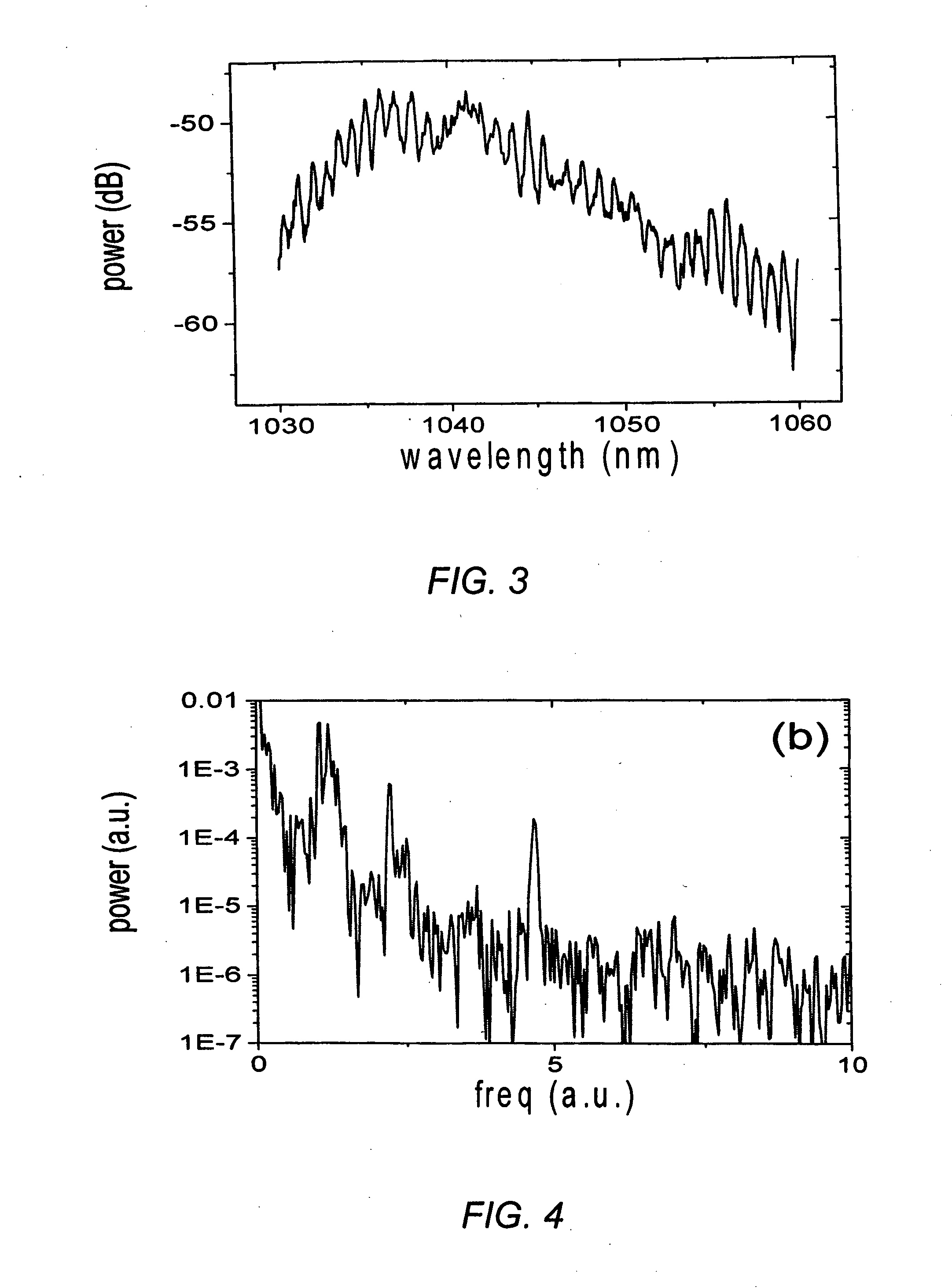Measuring modal content of multi-moded fibers
a multi-mode fiber and modal content technology, applied in the direction of measurement devices, structural/machine measurement, instruments, etc., can solve the problems of even less useful msup>2 /sup> and potentially confusing
- Summary
- Abstract
- Description
- Claims
- Application Information
AI Technical Summary
Benefits of technology
Problems solved by technology
Method used
Image
Examples
Embodiment Construction
[0014]In the context intended for this discussion, the subject optical fibers are typically few mode fibers but are referred to here as multi-mode fibers. In typical applications wherein specific modes are characterized, the number of modes propagating in the optical fiber may be few. However, applications may arise where the optical fiber supports many modes but just one, or a few, or even mode groups, may be the subject of the analysis. In some situations, the fiber may be nominally singlemode and a method is desired to analyze the characteristics of weakly guided or weakly radiated higher order modes.
[0015]A schematic of one particular implementation of the measurement technique of the invention is illustrated in FIG. 1. Light from an optical source 11, having a broad bandwidth (few tens of nanometers, or more) such as an amplified spontaneous emission source (ASE), is launched into an optical fiber 12. The optical fiber 12 is the fiber under test and is typically a large-mode-ar...
PUM
| Property | Measurement | Unit |
|---|---|---|
| mode-field diameter | aaaaa | aaaaa |
| length | aaaaa | aaaaa |
| length | aaaaa | aaaaa |
Abstract
Description
Claims
Application Information
 Login to View More
Login to View More - R&D
- Intellectual Property
- Life Sciences
- Materials
- Tech Scout
- Unparalleled Data Quality
- Higher Quality Content
- 60% Fewer Hallucinations
Browse by: Latest US Patents, China's latest patents, Technical Efficacy Thesaurus, Application Domain, Technology Topic, Popular Technical Reports.
© 2025 PatSnap. All rights reserved.Legal|Privacy policy|Modern Slavery Act Transparency Statement|Sitemap|About US| Contact US: help@patsnap.com



